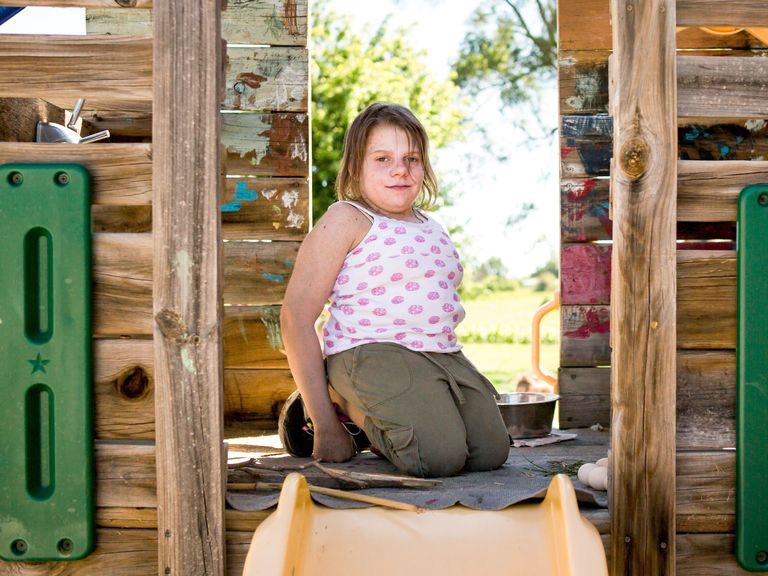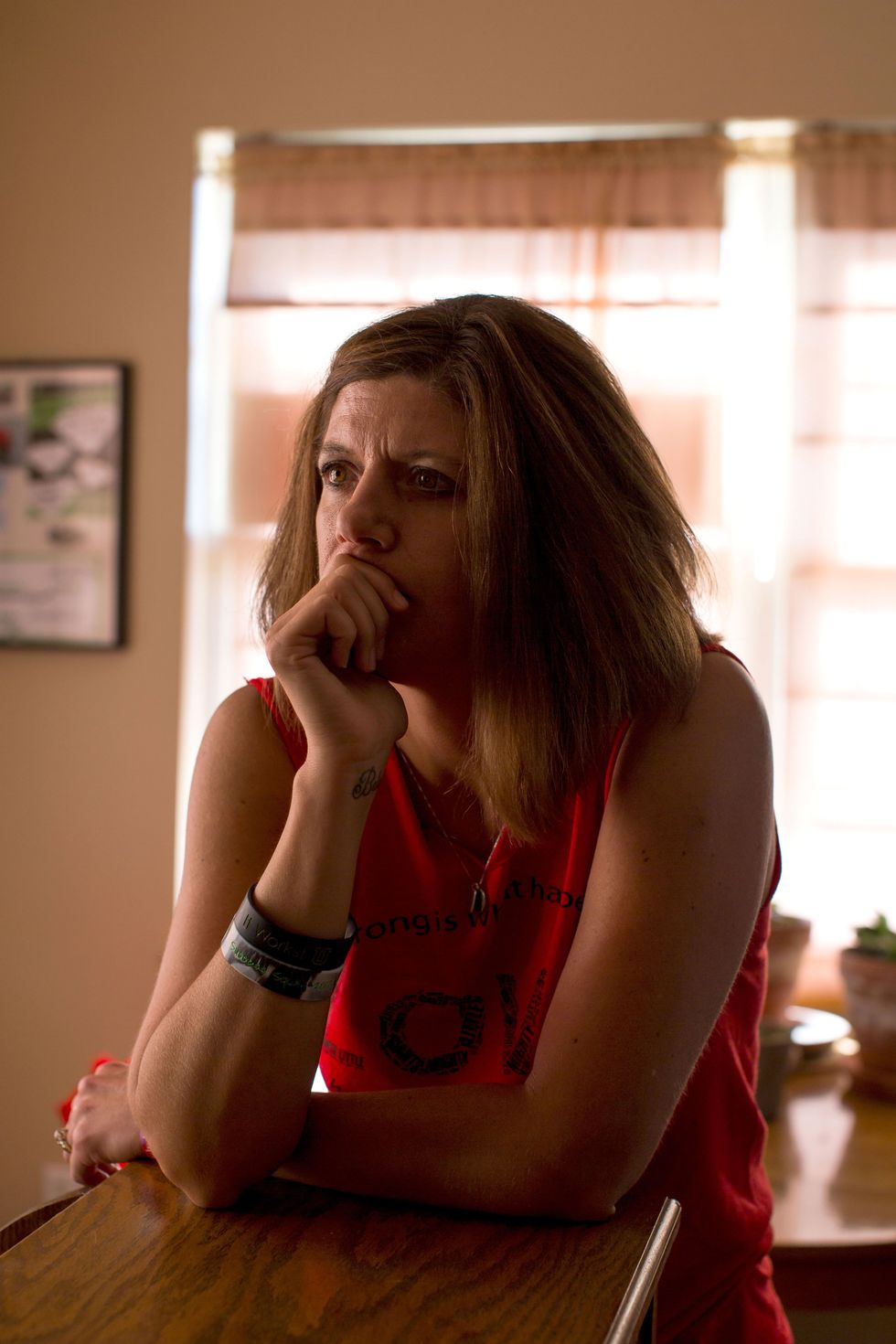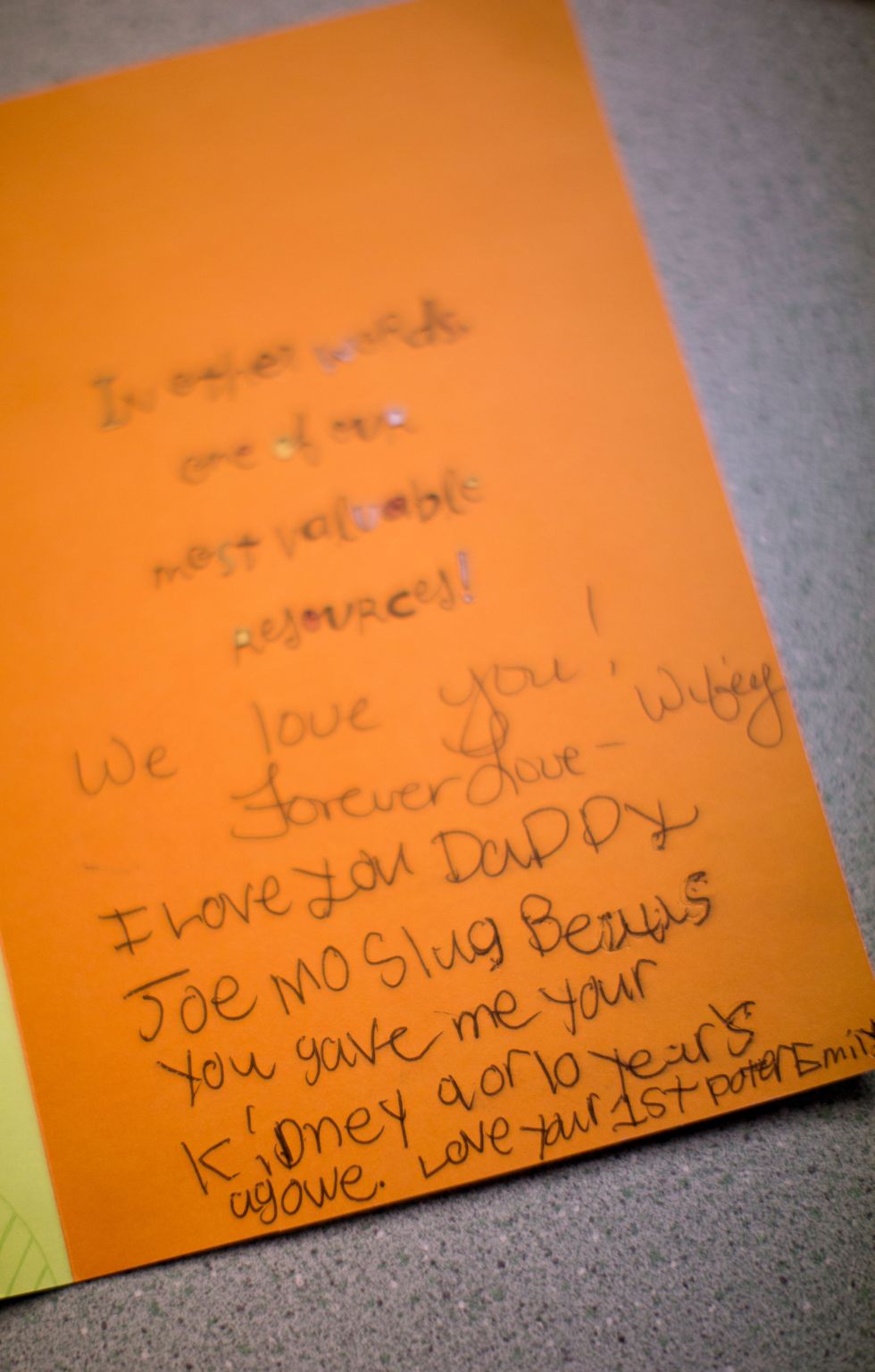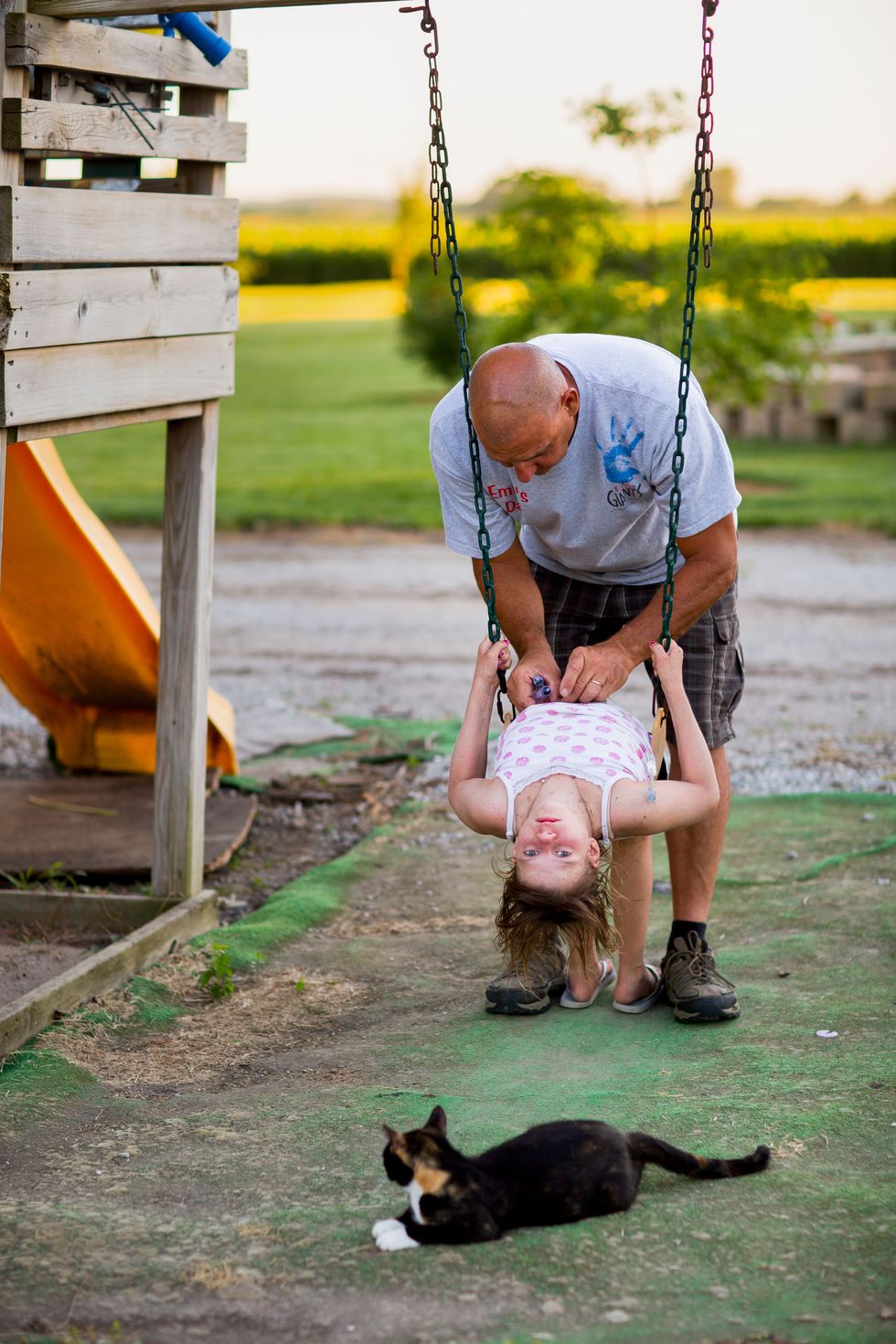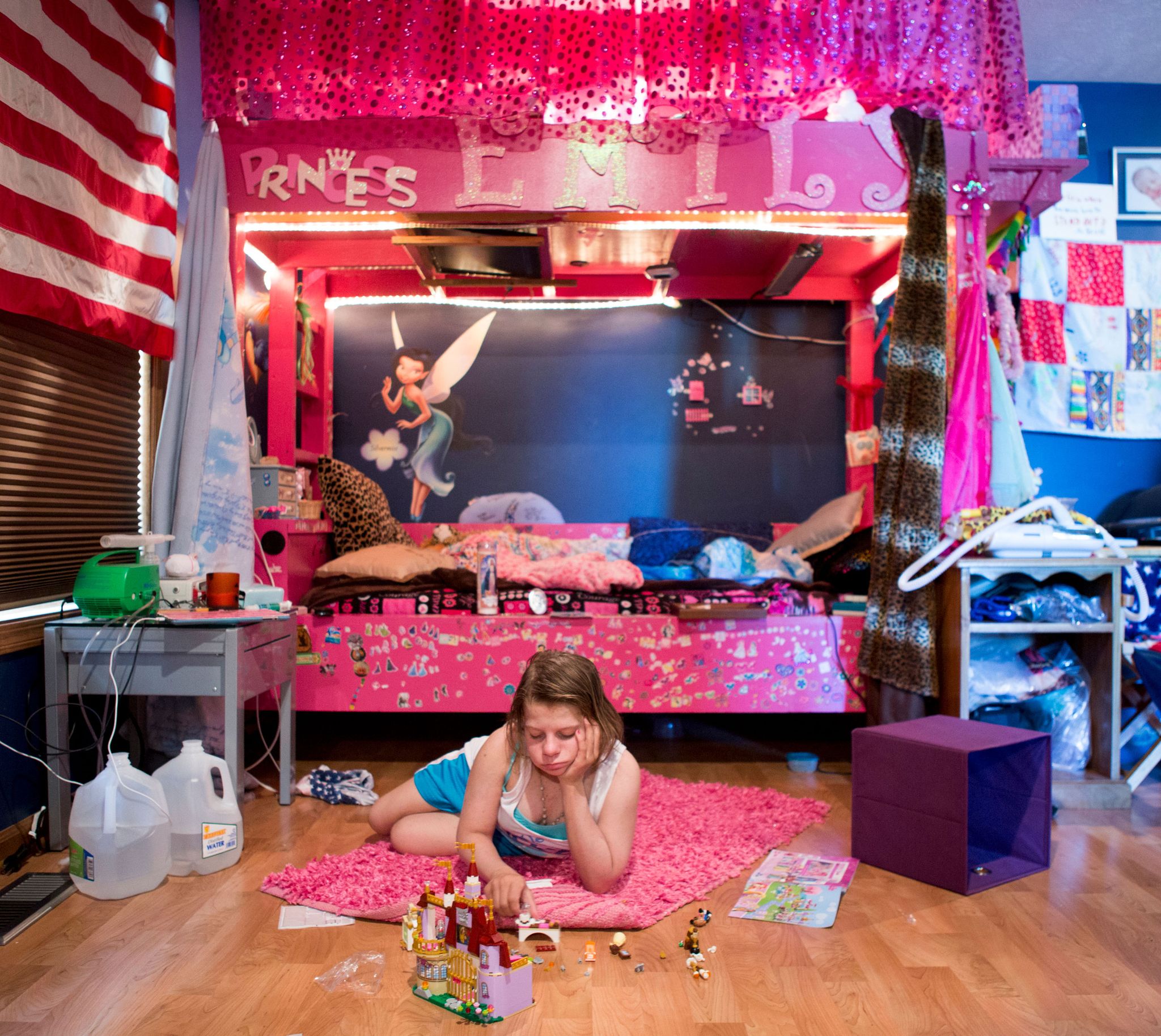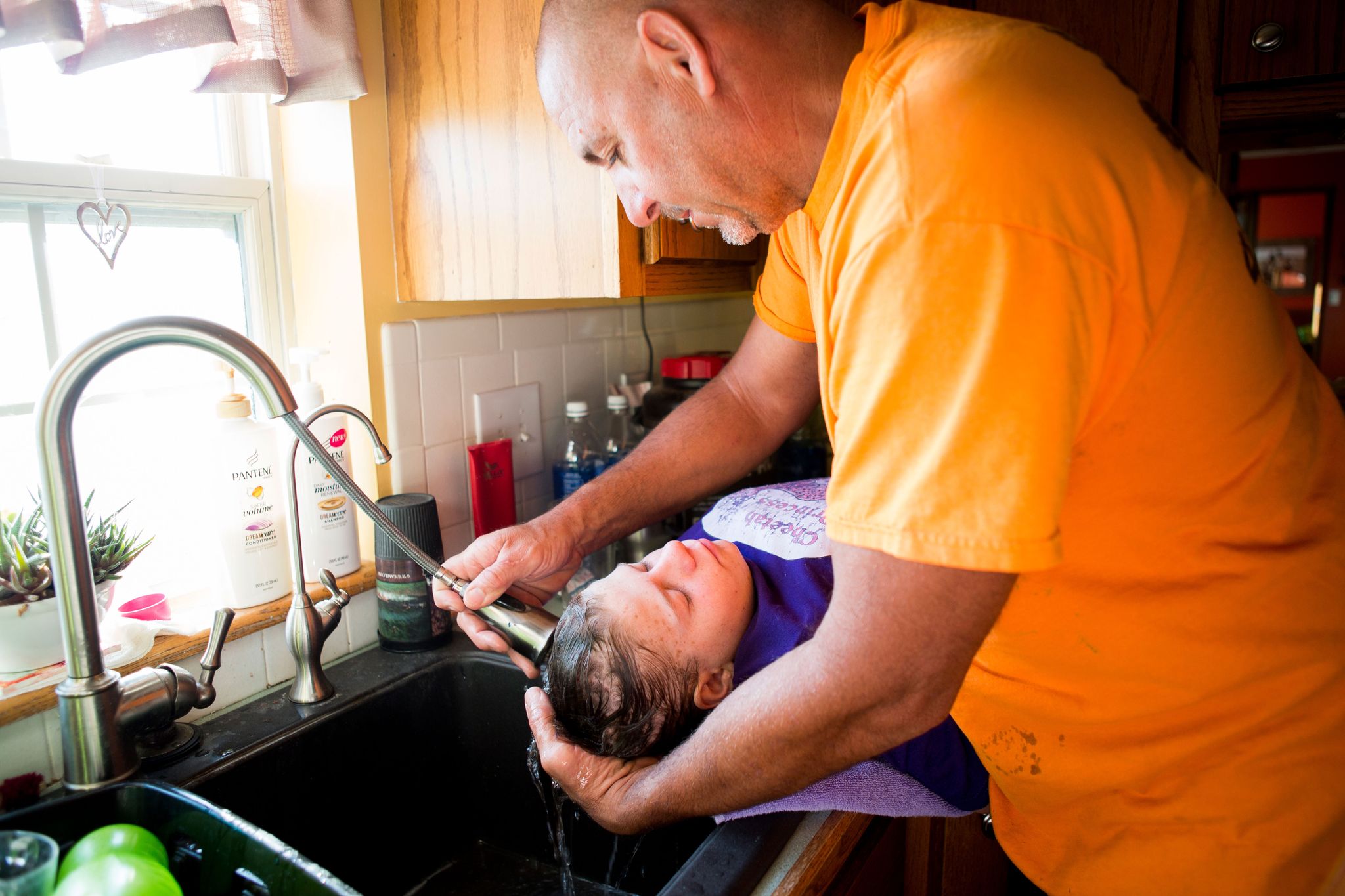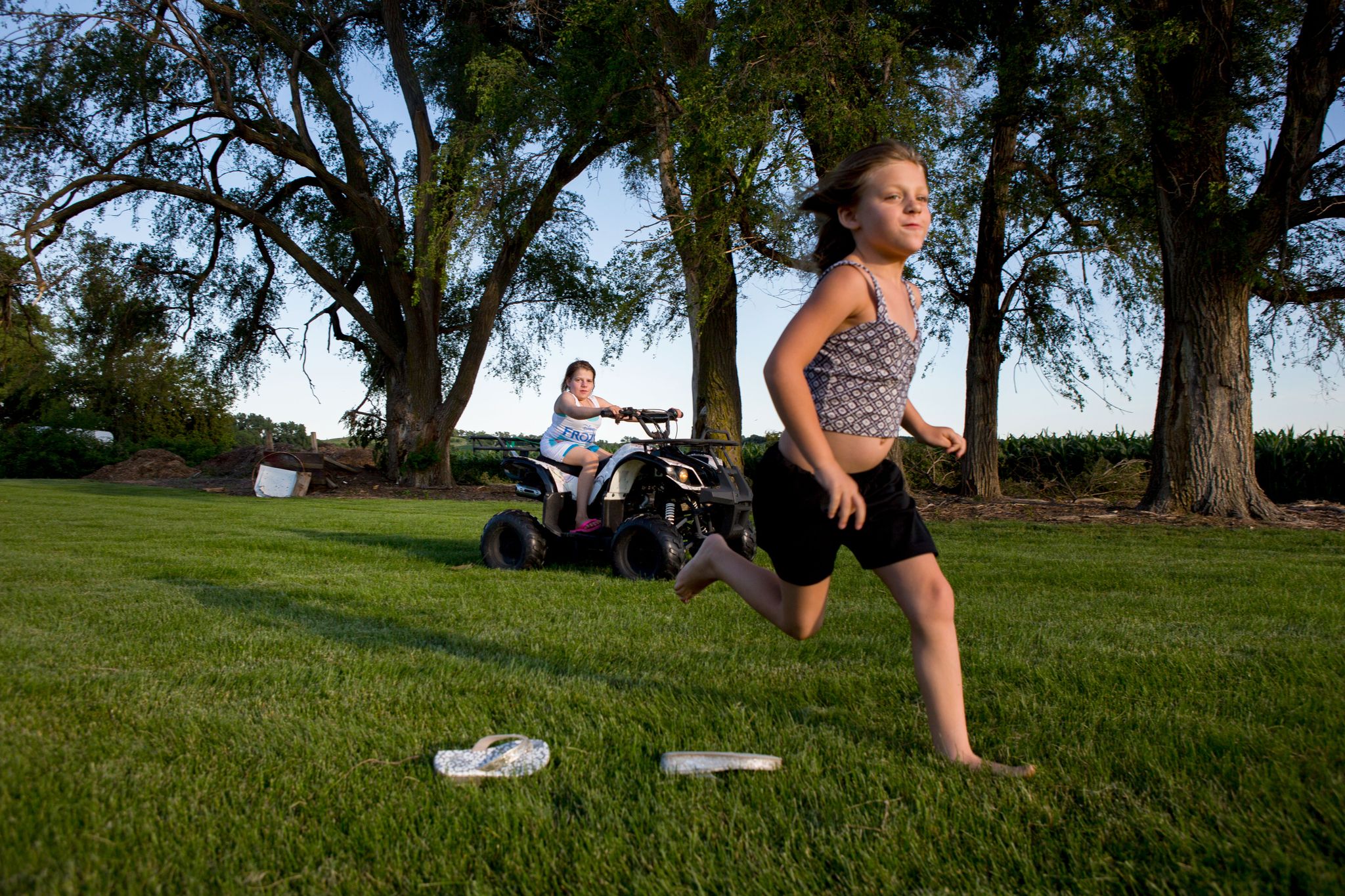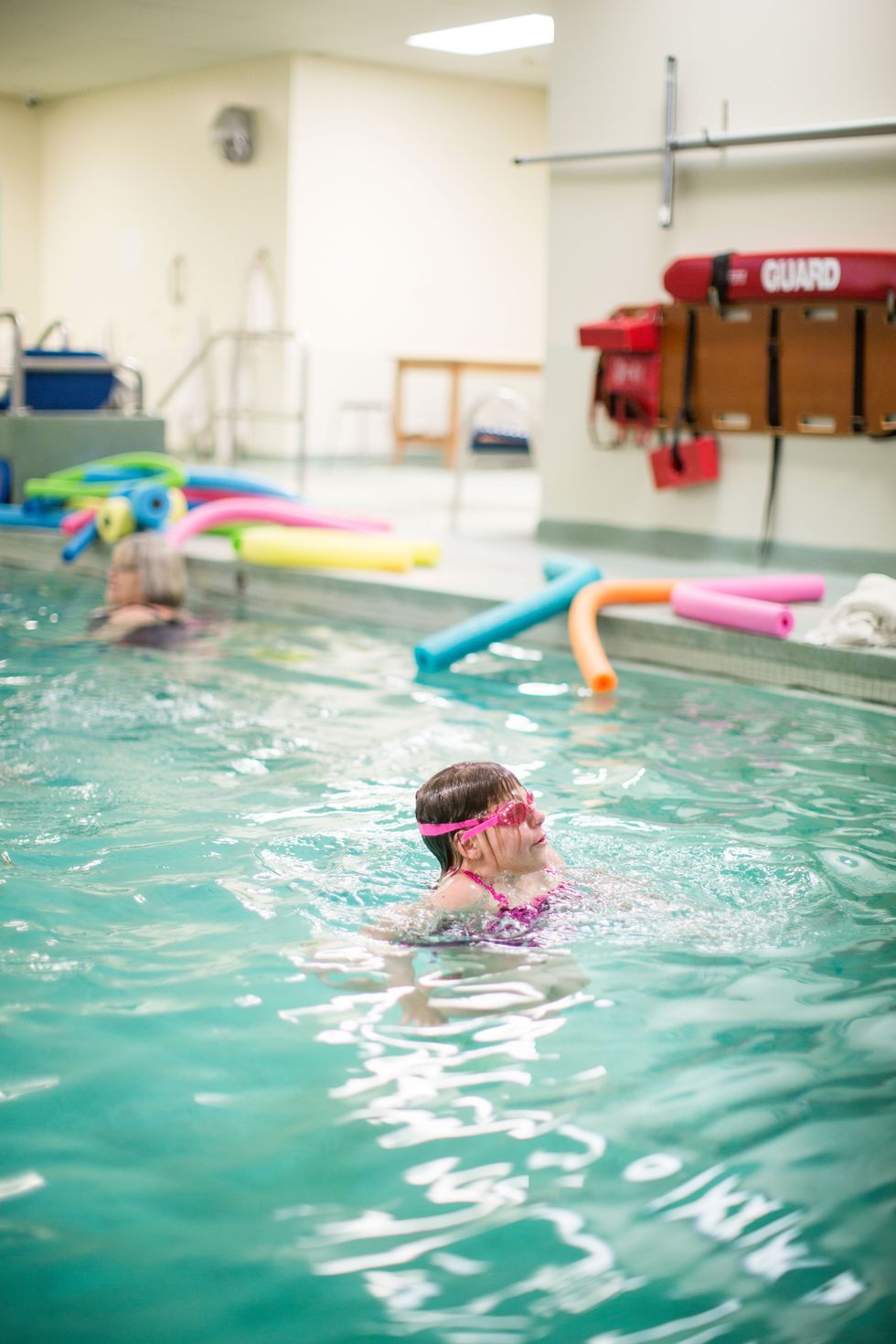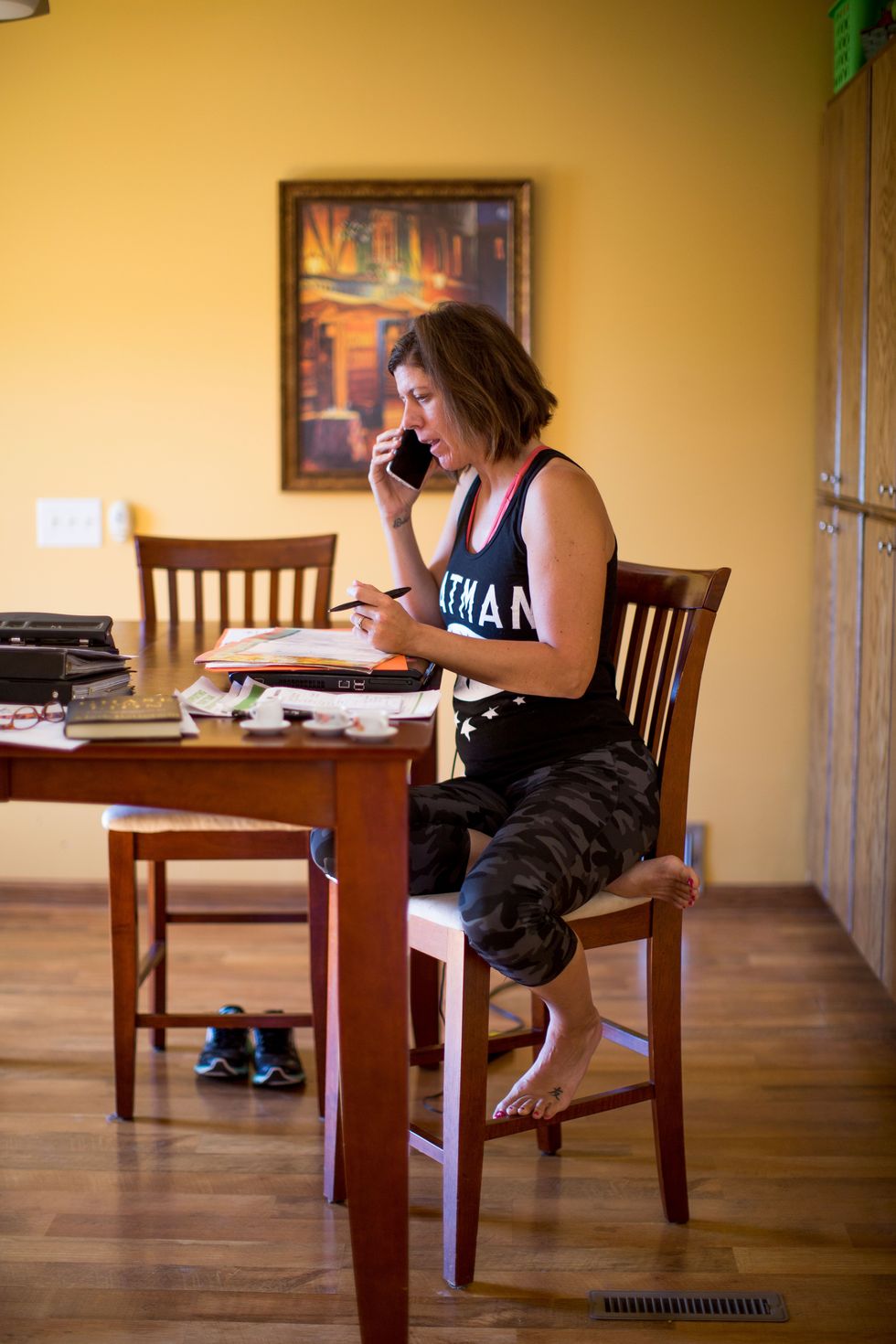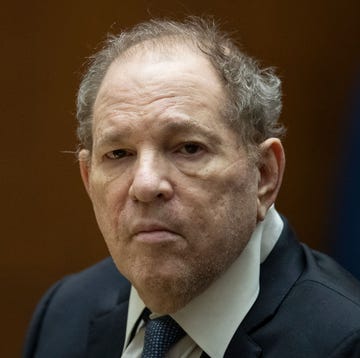It was late, between 10 p.m. and midnight in May 2008. Erin and Joe Koesters sat in their then-4-year-old daughter Emily’s hospital room in Omaha, Nebraska. Joe had just donated his right kidney to his little girl, and it was functioning well, but Emily had spiked a fever, and the doctors became concerned.
A scan revealed an abscess, a mass of pus that has collected in the body, on Emily’s native kidney, the one left behind. It would need to be drained by inserting a catheter into the kidney through Emily’s back, so the nurse, Erin, and Joe wheeled Emily to another area of the hospital.
Just before they headed back to Emily’s room after the procedure, Erin noticed some blood on Emily’s bed. “I thought the nurses or whoever must have forgotten to change her sheets or something, and figured we could just do it when we got back to the room,” she says.
It wasn’t that simple.
“When we got her in the room, I looked down and I saw her guts were spilling out, her intestines,” Erin says. Erin jumped on the bed and slapped her hands down on Emily's open abdomen and let out a scream. Joe jumped up and the nurse ran over. Emily’s incision had burst.
“I just rode on top of her,” Erin says. “The doctor told me to just hold pressure.” They were speeding Emily down the hall for emergency surgery, Joe running alongside, telling Erin, “Just don’t let go, just don’t let go.”
“Emily asked, ‘What’s wrong, Mommy?’ and I just kept telling her, ‘It’s OK, baby, we’re just going for a ride,’” Erin says.
Doctors dressed Erin in a surgical gown, mask, and hat. They needed her to continue pressing on Emily's abdomen all the way into the operating room. Erin told Emily it would be all right, the doctors just had to take care of something and she would see her after they fixed her up.
"I walked straight out of the operating room, saw Joe and everyone [the family], and I just dropped, like, straight down to my knees,” Erin says. “I just crumpled."
Ten years later, she shakes her head. "I thought that had to be the worst of it."
For families like the Koesters, health care is more than just politicians arguing on cable news. In the year after the kidney transplant, Emily was diagnosed with stage 3 lymphoma, had her lymph nodes removed from her neck as well as her adenoids, and started chemotherapy. During that same period, she was diagnosed with an extremely rare form of dwarfism called Schimke immuno-osseous dysplasia (SIOD), which is also fatal. At the time, Erin says, the family was covered by insurance through Erin’s job teaching at a local school (Joe was a self-employed contractor), but after a year of medical treatments for Emily, Erin looked into the plan's maximum coverage amount and realized that, with the way things were going, they could very well hit it. That’s when Erin found out Emily qualified for Medicaid. (Full disclosure: Erin and I went to high school together in Iowa but lost touch — we reconnected on Facebook in recent years.)
Medicaid is often viewed as a government-funded insurance program only for low-income people. However, 44 percent of disabled and chronically ill children, including those from higher-earning households, rely on the program for medical coverage. For the past several months, as Republicans have tried to repeal and replace the Affordable Care Act, also known as Obamacare, one of the common threads of the plans introduced was the radical cuts they would make to Medicaid. President Donald Trump, who during the campaign promised not to cut Medicaid, cheered on the effort to either repeal or repeal and replace Obamacare.
The nonpartisan Congressional Budget Office (CBO) estimated that 14 million fewer people would be covered by Medicaid by 2026 under a House plan that passed in May and 15 million fewer people would be covered by Medicaid by 2026 under a Senate plan introduced in June. The Senate bill did include an exception for children who meet the definition of “blind or disabled,” but according to Kaiser Health News, only 1.2 million of the approximately 5 million to 6 million children with special needs currently enrolled in Medicaid would qualify. A revised Senate bill would have done nothing to reduce the number of Medicaid recipients who would lose coverage.
On July 27 and into the early hours of July 28, after failing to pass two different proposals that week (a repeal-and-replace plan, and a straight repeal with no replacement plan), the Senate made a last-ditch attempt to pass something. But “no” votes from Republican Sens. Susan Collins, Lisa Murkowski, and John McCain doomed the “skinny” repeal bill, which, according to a preliminary CBO analysis based on expected provisions before the actual text was released, was projected to leave an additional 16 million people without health insurance by 2026.
Throughout the legislative process, Republicans’ main approach for cutting Medicaid spending centered around a federal government cap on the amount of money it provides to each state — a move that would force the states to make up the difference or cut so-called optional services and programs. In Nebraska, for instance, Emily is covered under the state’s Aged and Disabled Waiver program, and many states offer similar waiver programs that cover kids like Emily, but states are not required to maintain them. And if money from the federal government is restricted, they could be on the chopping block.
“Anything optional is at risk if Medicaid is cut,” said MaryBeth Musumeci, associate director at the Program on Medicaid and the Uninsured at the Kaiser Family Foundation, a nonprofit focused on health care issues, in Washington, D.C., in an interview days before the Senate vote. And even if states decide to keep options like the waiver programs to help kids, seemingly small yet critical benefits could still face cuts.
"Home modifications, day programs provided under the waivers, these are the type of things that are optional and are at risk of cuts," Musumeci said. The Koesters, for instance, have modified their home to ensure doorways could accommodate Emily's wheelchair, lowered their sinks to fit her stature, and gotten ramps installed and showers reconfigured. Medicaid recipients can apply to be reimbursed for costly modifications like these through the assistive technologies and home modification program.
That the Senate bill failed to advance is unquestionably a victory for those who fought against it and those who will retain their health care as a result. But it also may be a hollow one. “I think that this issue about cutting and capping will come back in the future,” Musumeci said. It may be through legislation or it may be through budget markup, she said, but “I anticipate that is not the last time we will hear about it.” In fact, this month, the House introduced a budget plan that would save about $1.5 trillion through cuts to Medicaid and changes to Obamacare. And Trump’s budget, released in May, called for cutting more than $600 billion from Medicaid.
The ongoing threat to the health care of millions of kids is startling. But millions is an abstract and impersonal figure. Emily and her family represent just one of those families in America whose lives, without Medicaid, would be changed forever. They are just one of many families absorbed in the all-consuming task of taking care of a loved one and juggling finances to avoid possible bankruptcy all while trying to maintain some sense of normalcy.
A couple of months before she turned 4, Emily started putting on weight. At first, Erin thought it was typical since many toddlers get heavier before a growth spurt. Or, because Emily’s eyes started to puff, maybe the changes were attributable to allergies. The pediatrician’s office said since Emily’s annual checkup was coming, they could talk about any concerns then. But by the time the appointment rolled around, in July 2007, “she looked like she was nine months pregnant,” Erin says. “The nurses took one look at Emily and knew she was in renal failure.”
This set off the chain of events that included the kidney transplant (and Erin’s ride down the hospital hallway holding her daughter’s abdomen), the cancer diagnosis, and additional genetic tests — tests that ultimately led to Emily’s SIOD diagnosis. SIOD is so rare that Emily is one of five kids in the U.S. and 50 worldwide with the genetic disorder. Children diagnosed with SIOD often die within a year of diagnosis from renal failure or stroke; the average lifespan is 9.2 years. Often the first event that leads to a SIOD diagnosis, like renal failure, is also the last before the child dies. SIOD doesn’t just impact stature — it attacks all the systems of the body. Almost every medical issue Emily has or will have is a result of SIOD, and even illnesses that aren’t caused by SIOD, like the common cold, are significantly more dangerous because her immune system is compromised.
At the time of the diagnosis, Erin and Joe couldn’t even focus on what it meant — “we were still in Cancerville over here,” Erin explains — but the years that followed have been a cycle of doctor’s appointments, hospital stays, surgeries, therapies, phone calls, medications, and paperwork, all under a cloud of SIOD’s unpredictability. In 2016, Erin left her job to care for Emily full-time, and Erin and Joe got health care through the state exchange. Emily’s 6-year-old sister, Taylor-Jo, is also on Medicaid because of a provision decoupling parents and children, so only the child’s income — none — is taken into account to determine eligibility. (Early tests confirmed Taylor-Jo didn’t have the recessive SIOD genetic mutation.)
At age 10, Emily suffered joint pain as a result of a degenerative hip disease that was so bad she couldn’t move without wailing. But even after a double hip replacement surgery, the recovery hurt so much that the doctors had Emily on an adult dosage of oxycodone.
It was the first time Emily asked her mom if she was going to die. She would scream and cry, and nothing would console her. Erin doesn’t know if it was the pain or Emily understanding more about all her hospitalizations that drove Emily to ask.
“Then she started saying things like, ‘I would just be better off in heaven because everyone says there is no pain in heaven, so I wouldn’t be in pain, and I would be all right,’” Erin says. “And I told her she couldn’t go to heaven yet because we would miss her on Earth.”
In 2015, Emily and her best friend Hailee were playing one day between the backyard playhouse and pool. After checking on the girls — at that point hanging out in the air-conditioned playhouse — Erin went inside to take a quick shower. When she came out of the bathroom, she saw Emily lying unresponsive on the floor with Joe hovering over her. Joe figured it would be quicker to drive to the hospital than wait for an ambulance to get to their rural area, so he got behind the wheel and Erin held Emily in the back seat of the van.
“All of a sudden, she goes from unresponsive to flailing and throwing up, and I yell at Joe to pull over,” Erin says. They ended up calling an ambulance from the shoulder of I-80.
By the time they reached the hospital, Emily was in a coma. However, the doctors still couldn’t get her seizures fully under control.
“She laid in bed and her thumb would just twitch,” Erin says. “Then, all of a sudden, her arm shot up and she started making this sort of clicky noise with her mouth.”
This hospitalization was the one time Erin and Joe started to lose hope. “We would lay on the pull-out couch in her hospital room, holding each other and crying,” Erin says, “and we would say things to each other like, ‘We have been so lucky to have her this long,’ and, ‘We were so grateful she was still here at all.’”
Emily woke up about two weeks after the onset of the seizures.
“She just — bloop — opened her eyes and all she could say was ‘Hailee,’” Erin laughs. “It was 'Hailee' as ‘yes,’ or we’d ask if Emily was hungry or whatever, and the answer was always ‘Hailee.’” After 16 weeks of rehabilitation, Emily was walking (first with a walker, then with crutches) and talking again.
When I first meet Emily in June, at the final performance of her choir camp in Lincoln, Nebraska, it’s been three decades since I’ve seen her mom, and Emily, at 13, has been defying the odds for years. It is the third year Emily has attended this camp but the first she’s been allowed to stay the five nights. Every morning and evening, Erin or Joe drives 80 miles round-trip from their home just outside Gretna, Nebraska, to administer her meds through a G-tube implanted in her belly and make sure she puts on her CPAP machine at night. Emily has sleep apnea so she needs the machine to make sure her airways remain open. Emily hates the machine. Or, as she explains it, she wants to put it in the microwave, then blow it up and ultimately throw it out the window.
The twice-daily drives don’t faze Erin — she’s used to going nonstop. On a later day during my visit, we would leave the house by 10 a.m. to take Emily to summer school, then dash downtown for a checkup following a fungal lung infection Emily was hospitalized for last year, then immediately head to aqua therapy where Emily seems to know all the ladies in the seniors group at the other end of the pool. When I express my exhaustion, Erin tells me that was nothing.
The kids take their places at the concert and Emily plops down in her hot pink wheelchair. Just before the third song, the conductor takes a moment to tell the audience about the next piece. Called “The Last Spring,” it has an adult message: Winter turns to spring and the protagonist mourns. Will this be the last spring or season they will see? Older people and seriously ill people, the conductor says, face the prospect of not seeing the next season.
At one point, Emily nods off; she can tire easily because of her disease and nearly a week at camp has pooped her out. But after the concert, she appears to have gotten a second wind. At 3 feet, 4 inches, she’s smaller than her peers but she fits right in: flitting from friend to friend, using her crutches, putting them down to hug someone, running to say hello to a parent or sit for a photo with a gaggle of other teens. When it is time to leave, the girls’ refrain — See you next year! — follows us out the door.
A few days later, sitting at her dining room table, Erin and I are listening to dead air over her speakerphone as we wait for Erin’s legal aid representative to patch us into a call with the Supplemental Security Income (SSI) administration of Nebraska. SSI is a federal program supplemented by the state that provides enrollees with an income averaging about $600 per month, according to 2017 government projections for children 18 and under, and Erin has been trying to get Emily’s application approved for the past 10 months. Though Medicaid covers medical costs, there are a lot of additional out-of-pocket expenses associated with caring for a sick child, from paying for gas and parking at all of Emily’s appointments to buying a bath stool, so Emily can get into and out of the tub.
Spread out in front of us are piles and piles of paperwork. Not just for SSI but for all things Emily. A file for the Department of Health and Human Services of Nebraska, which oversees administration of the state Medicaid program. A file for Medicaid Nebraska, which directs programs associated with Medicaid, and a file for the Aged and Disabled Waiver, which is the Medicaid program under which Emily is covered due to her disability. Emily also has had a revolving door of caseworkers assigned to monitor her progress and process paperwork. Erin tells me that supposedly this is to make sure Emily’s needs are met. In reality, though, “I don’t know what?” she says. “To make sure we aren’t making it all up?”
Finally, an SSI representative picks up. We ask: What is the status of 13-year-old Emily Koesters’s benefit application? Still in process, says the rep, who provides another number to call. We immediately dial the other number, leave a voicemail, and are advised to wait two weeks before following up.
Erin, who has been “following up” since fall 2016, rolls her eyes. Swap out "SSI" with "Medicaid" or "pharmacy" or "medical supplier," and you have the same conversations over and over. Earlier this year, Emily needed to visit her osteopath in Delaware to check her hips. The Delaware hospital specializes in pediatric hip surgery and was the best care available for Emily, but out-of-state services require special preapproval through Medicaid, and Erin spent months on the phone with Medicaid representatives. One call, she tells me, lasted two hours including hold time, multiple transfers, and ultimately no answers.
Despite the Koesterses’ frustration, they are grateful for Medicaid. Though Joe still works as a contractor and Erin works from home selling natural skin-care products, they know Emily’s medical expenses could bankrupt them — they almost filed two years ago, Erin tells me — without the government coverage. Erin acknowledges that, as a caretaker, she has many advantages: She is educated, white, middle-class, is near a city with excellent hospitals, and has family and friends nearby. Her concern for Emily runs parallel to that for other families with terminally ill children, ones that may not have the resources to navigate the systems needed to care for the sickest among us. Do they all have to go through this shit? Isn’t the stress of having a child who might not reach 18 stressful enough?
Erin knows as well as anyone the devastation Medicaid cuts at the federal level would cause but doesn’t have time to follow every turn of the health care fight. She did, however, call her U.S. Sen. Republican Ben Sasse and left a message to vote no on the ACA repeal. (Sasse voted yes on all three versions of the Senate repeal bill that came to the floor last week.) Now she’s focused on what she can do to benefit children like Emily.
In March, Joe’s mom, Jeanette Roy, happened to meet State Sen. John McCollister at a church fish fry. She was talking about her granddaughter and the stress of trying to get everything approved so there’s no lapse in coverage, and he handed her his card. “He told Grandma J, ‘Make sure your daughter-in-law calls my office,'” Erin says.
Now Erin is working to craft state legislation that would eliminate some of the hoops families of children on Medicaid have to jump through. Her ideal legislation would create a waiver that would work like this: Once a child is diagnosed with a terminal illness, one approval based on the doctor’s diagnosis alone would integrate all the benefits the child is entitled to, including Medicaid and SSI, and the approval would cross state lines, so the child has access to the best care possible no matter where a doctor is located. There would be no lifetime caps on coverage. And there would be one point of contact at the Department of Health and Human Services of Nebraska, so the family doesn’t have to spend hour upon hour chasing down the right person. Erin has more details to work out but she says she has to start somewhere.
Sherrie Geier, McCollister’s senior legislative adviser, says, “We have been listening to Emily's mother, and the Nebraska Legislature's Ombudsman's staff has researched options that currently exist in Nebraska and other states.” They are trying to determine if the adoption of such a Medicaid waiver would be a legislative or executive branch function – or even possible. Geier says the office is happy that Emily's story is being told because it is the personal stories like the Koesterses’ that are critical in the current national health care fight.
Erin knows the waiver is far from a sure thing. And even if she gets legislation or an executive order through, Emily may not be around to see it. But, she says, “Can you just imagine though? I mean, man, what a beautiful legacy.”
I try several times to talk to Joe about Emily’s illness during my stay, but he would provide only basic facts and sweet anecdotes. It isn’t that he doesn’t want to talk — he loves talking about his girls — but talking about all Emily has endured cuts him deeply. When Emily was first sick, Erin was still teaching so Joe would take Emily to her appointments. After Emily got Joe’s kidney, he finally allowed her into his man cave — Erin couldn’t come in but Emily’s man-kidney gave her a free pass. When Emily was well enough, they would go chip rocks from a cliff at a local park even though it was technically a park no-no. Emily overhears us talking, and we can hear her laugh out loud from thinking about her and her dad breaking the rule.
On my last day in Nebraska, Emily and I poke through the gift shop at the Holy Family Shrine. It is a roadside attraction just off I-80 between Omaha and Lincoln. At night, she can see the hilltop shrine alight in the distance from her backyard.
Emily touches everything: Virgin Mary medallions, statues, necklaces, rosaries, a painting of a saint with head bowed in silent prayer. “I am adding to my Mary collection,” she says. “I might be the youngest person to have a collection.”
The Koesters family aren’t churchgoers; they don’t belong to any religion. But three years ago, Emily went to church with Grandma J and found a “Miraculous Mary” necklace in the free bin. She hasn’t taken it off since. Erin has no problem with her daughter's fixation. “I don’t know what’s out there,” she says, “but if this makes her feel better, that is fine by me.”
Among the holy goods sits a bowl labeled "Scapulars $1." What’s a scapular? Emily asks. One side bears the image of a monk on bended knee before Mary and baby Jesus; the other bears a written promise: Whosoever dies wearing this scapular shall not suffer eternal fire. Some Catholics, I explain, believe that if a person is wearing the scapular when they die, it is a ticket straight to heaven.
Emily gives a little laugh, shoves her hand down her shirt, and fishes out her medallion. “I got my passport right here!”
That night, Erin makes hot dogs, the only thing Emily will eat this month. (Last month, it was cinnamon rolls.) Then it is medication time again. Erin lays out the tray with syringe after syringe full of pink, brown, and clear liquid medications. Over the course of my stay in Nebraska, Emily’s parents administer her medicine while Emily is riding on a four-wheeler, while she’s lying next to the kitchen sink as her mom washes her hair, while she catches lightning bugs with her sister. The action stops for a minute, Erin or Joe injects the prescriptions, and then they move on, following Emily with various syringes throughout the night.
Emily and I head to her room, where she assembles her collection of Virgin Mary icons for her altar. We light her two Mary candles and say a quick Hail Mary. Then we talk about her upcoming 14th birthday. She gets to have two girls spend the night and they will be sleeping in the playhouse. There will be music (not Justin Bieber, she tells me with a fake barf sound) and of course cake.
Soon, Emily yawns and I know it is time for bed. I tell her I have a 6 a.m. flight so this is going to be goodbye. She grabs a packet of wildflower seeds bearing the image of Mary and asks me to take some with me. But, she says, we have to think of a special occasion when we would both agree to plant them. Christmas won’t work because the ground would be frozen. Her birthday? Easter? She asks me the date of the choir concert. June 16, I say. That’s the date, she says, the one-year anniversary of when we met. Erin comes in and I give Emily a big hug.
Don’t forget, I remind her, next year, seeds, and I pull the door closed behind me.
Follow Andy on Twitter.
